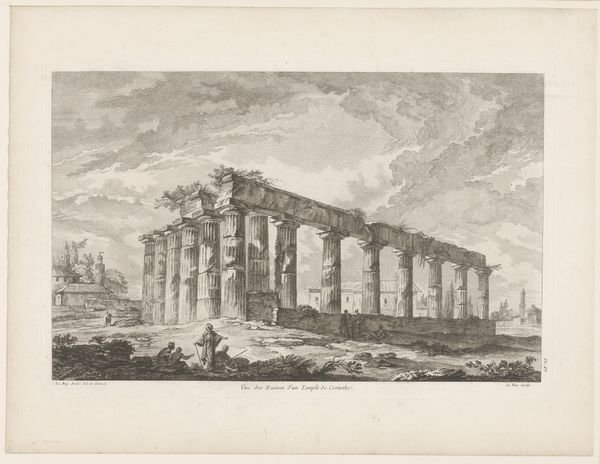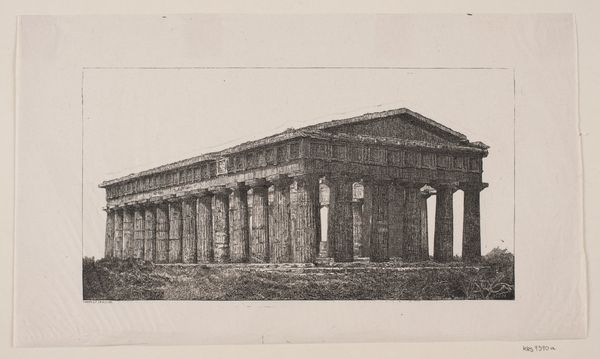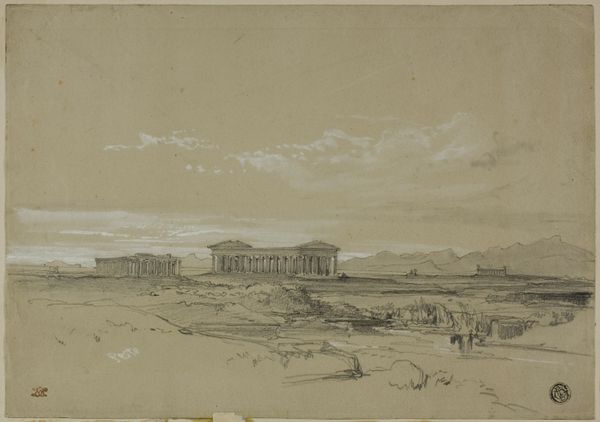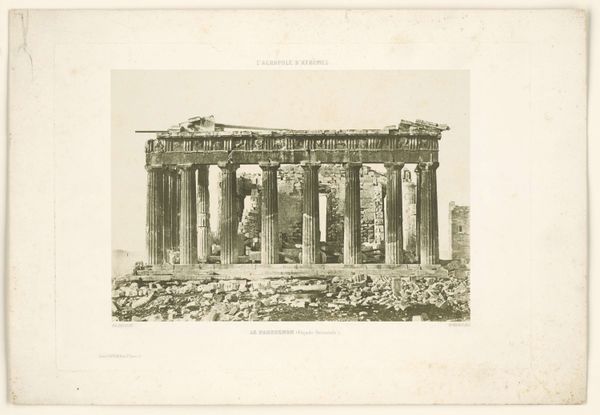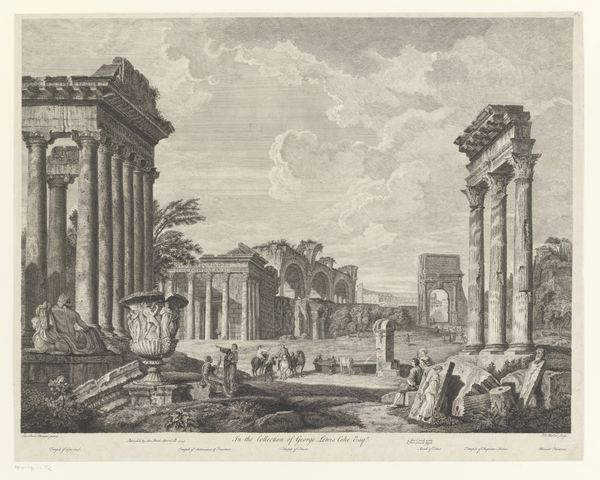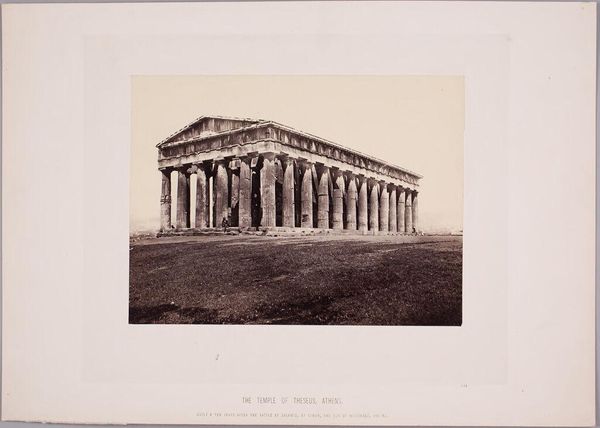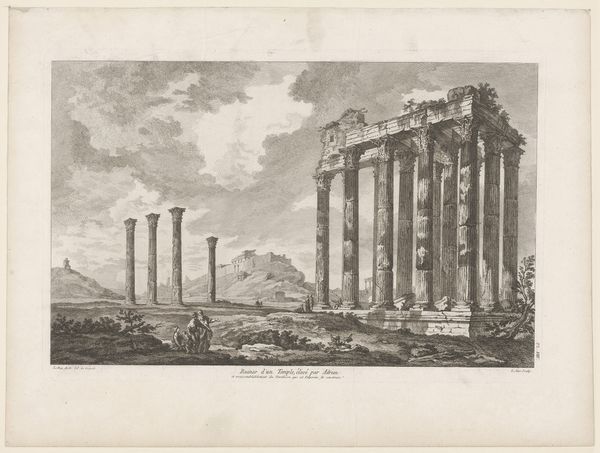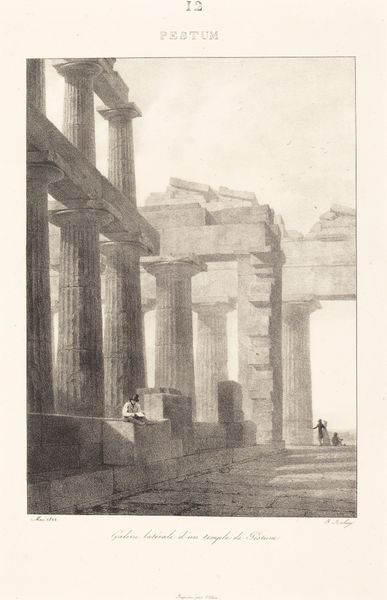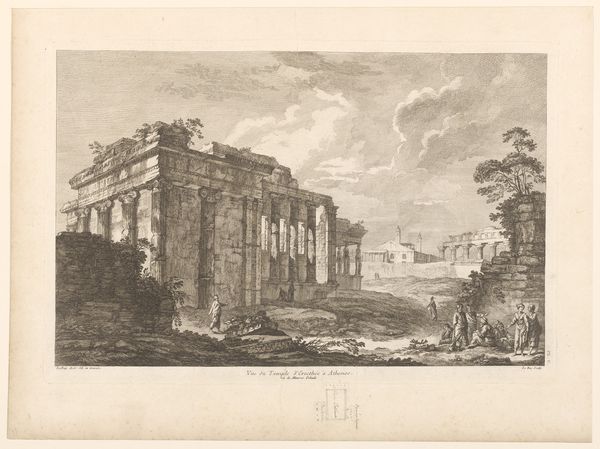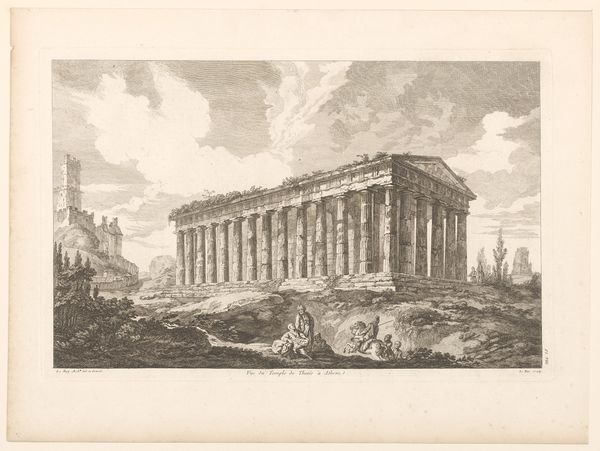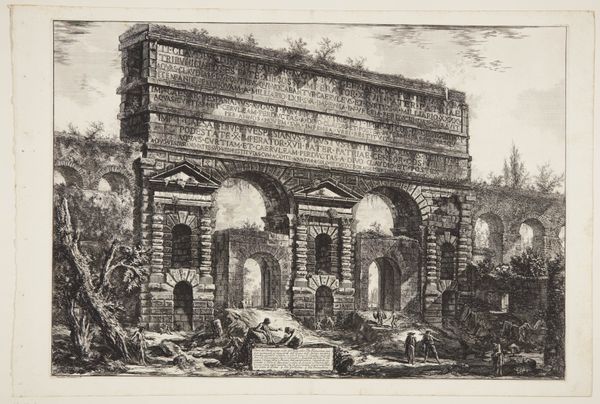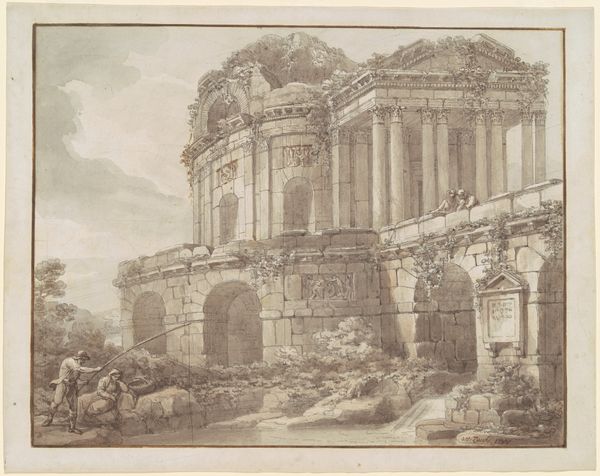
drawing, tempera
#
drawing
#
neoclacissism
#
tempera
#
landscape
#
etching
#
form
#
geometric
#
ancient-mediterranean
Dimensions: height 299 mm, width 740 mm
Copyright: Rijks Museum: Open Domain
Curator: This is Louis Ducros' "Temple of Segesta in Sicily," created in 1778. The work on view here at the Rijksmuseum is a drawing that combines tempera and etching techniques. Editor: Right, it feels so calm, so… archaeological. Almost ghostly, this half-ruined temple emerging from the soft landscape like a memory. I imagine Ducros, sketchbook in hand, chasing the light across these ancient stones. Curator: Indeed. Ducros, along with many other artists of his time, were deeply inspired by classical antiquity, especially as rediscovered and re-evaluated through archaeological expeditions in Italy and Sicily. There's a real element of Neoclassical longing here, isn't there? Editor: Absolutely. It's more than just representation; it's romanticization, or at least… a search for clarity. The precision is captivating. The Doric columns… They stand defiant. Like bones, bare against the world. Curator: That pursuit of the ideal informs everything in this piece, and in much of Neoclassical art. The clarity and geometrical organization aren’t just about form, but about a sense of order inspired by classical architecture and thought, particularly Roman ideals being revived during this era in European thought. The drawing has the temple as the clear focal point and an austere monument. Editor: I agree! Look, the absence is as present as anything. The decay somehow amplifies what was there, and more compellingly, what could be. Think about the absent roof. Where’s the story of this structure? Who did the pillars welcome? Curator: The drawing offered travelers—who were increasingly journeying across Europe during this period—a souvenir or memento to evoke both learned understanding of history and appreciation for their travels. Ducros catered to this burgeoning Grand Tour market. These artworks documented places of cultural and historical significance that fueled scholarly discussions, political analogies, and cultural values centered around notions of classicism. Editor: To ponder ruins that powerful…to feel the scope and reach. So, the image is designed as a vessel, waiting to be filled. What I’m taking away from our short journey, is it isn’t simply what once was, it’s more truly about possibility. Curator: A perfect testament to the impact of the art and art history itself.
Comments
No comments
Be the first to comment and join the conversation on the ultimate creative platform.
